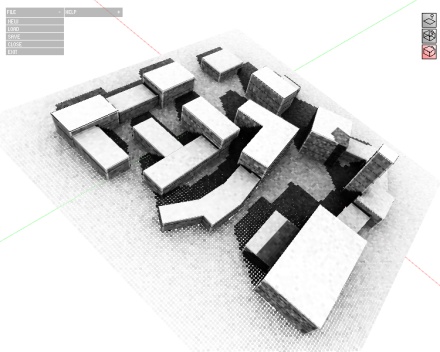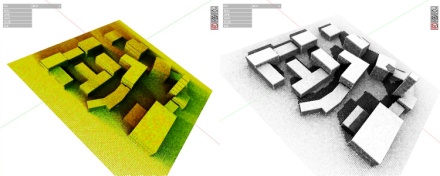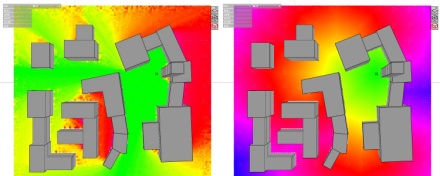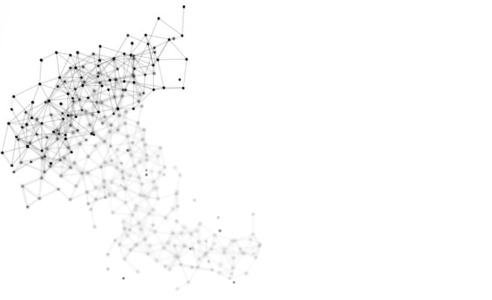••• spatial analyses for urban environments

The aim of the project is to question the role of computer-aided design methods in urban development, to ask in which parts of the design process the use of the computer can be appropriate. While commonly the focus of most computer aided design sotware is on drawing layouts, that are defined by various analog methods, it does not give the designer any information about the quality of the design itself.
The developed tool assists the designer in an early step of the design process, where basic principles of the layout are defined. While the conditions of the design regarding light, spatial, geometrical and urbanistic context are displayed, it can be addapted in real-time.
Therefore three kinds of analysis methods are implemented in the tool so far:

Illumination solver (left: Sun gradient - green=morning, red=evening, right: Static sun)

Accessibility solver (left: by angle, right: by distance)




Spatial analysis solver
Labels: processing, wewu

